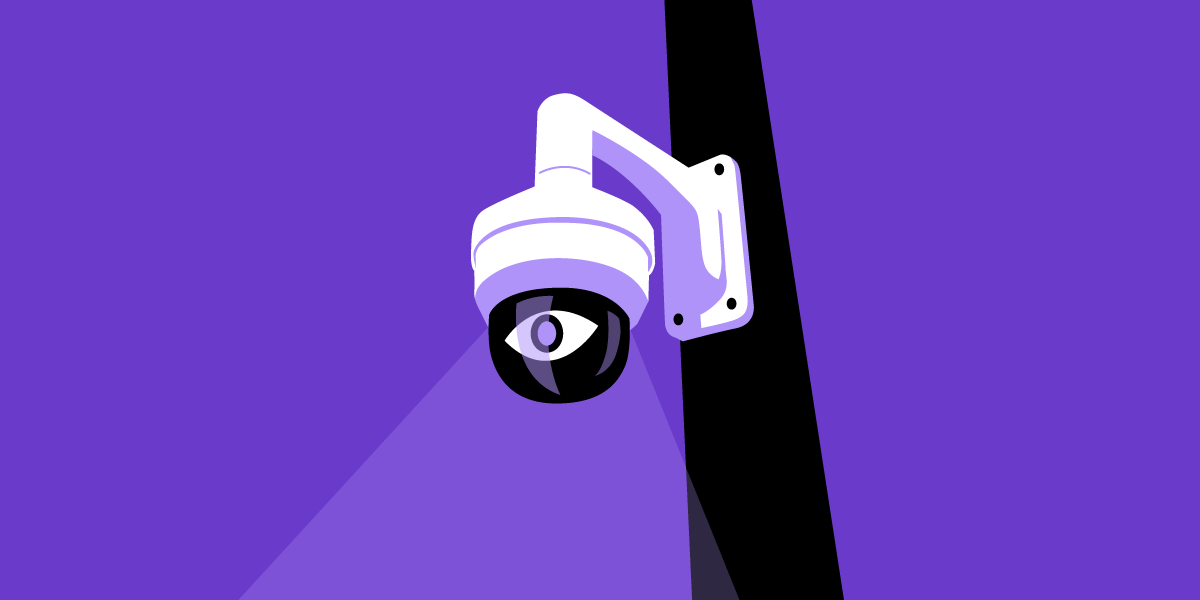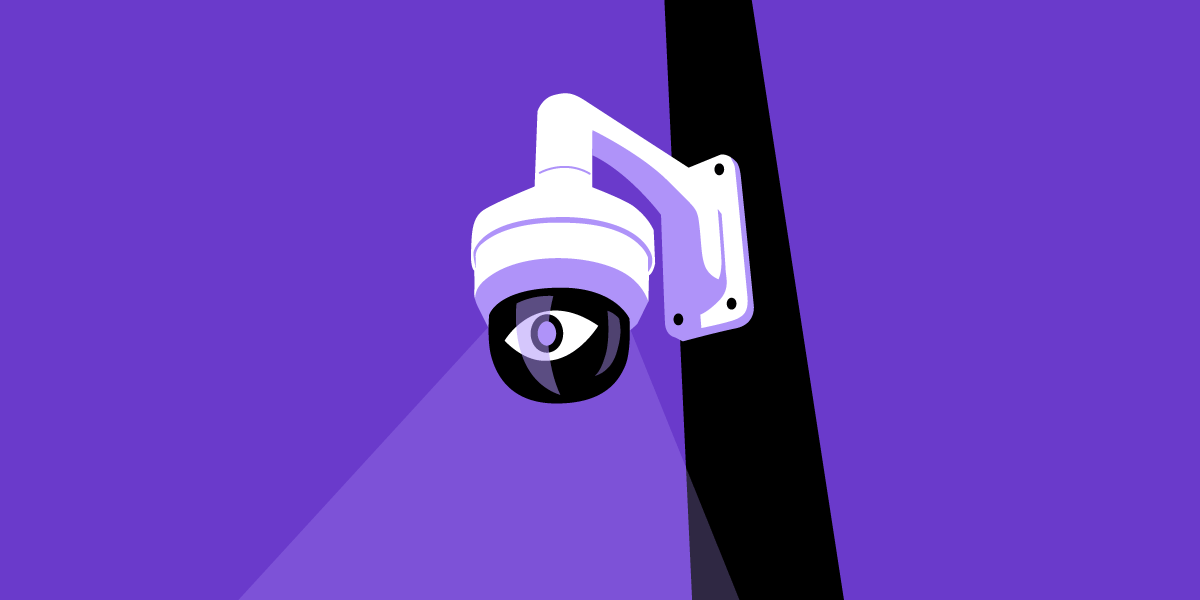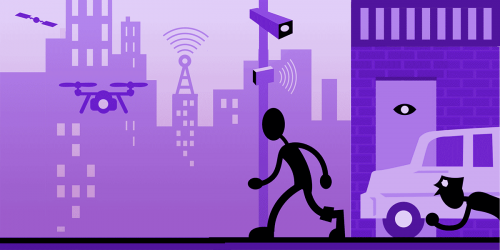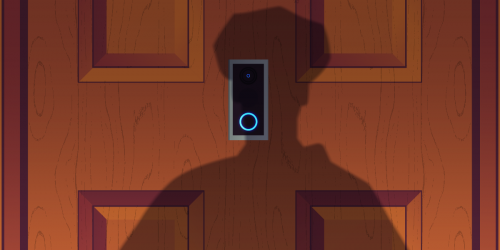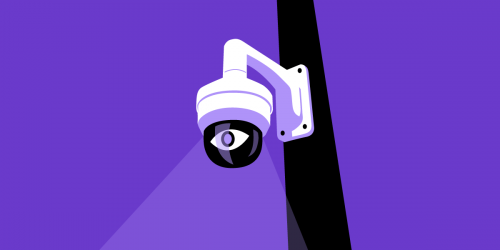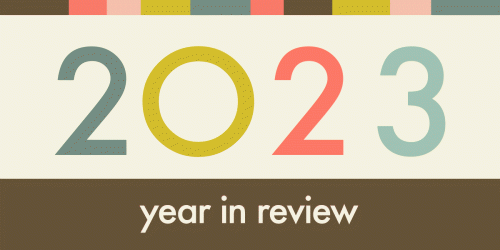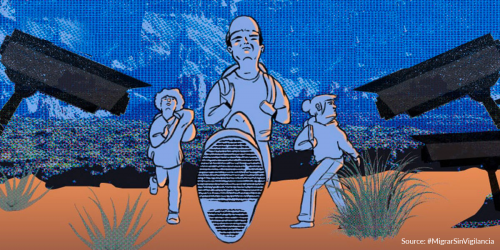A new report reveals that in just three months, from July 1 to September 30, 2023, the San Francisco Police Department (SFPD) racked up 193 hours and 19 minutes of live access to non-city surveillance cameras. That means for the equivalent of 8 days, police sat behind a desk and tapped into hundreds of cameras, ostensibly including San Francisco’s extensive semi-private security camera networks, to watch city residents, workers, and visitors live. An article by the San Francisco Chronicle analyzing the report also uncovered that the SFPD tapped into these cameras to watch 42 hours of live footage during the Outside Lands music festival.
The city’s Board of Supervisors granted police permission to get live access to these cameras in September 2022 as part of a 15-month pilot program to see if allowing police to conduct widespread, live surveillance would create more safety for all people. However, even before this legislation’s passage, the SFPD covertly used non-city security cameras to monitor protests and other public events. In fact, police and the rich man who funded large networks of semi-private surveillance cameras both claimed publicly that the police department could easily access historic footage of incidents after the fact to help build cases, but could not peer through the cameras live. This claim was debunked by EFF and other investigators who revealed that police requested live access to semi-private cameras to monitor protests, parades, and public events—despite being the type of activity protected by the First Amendment.
When the Board of Supervisors passed this ordinance, which allowed police live access to non-city cameras for criminal investigations (for up to 24 hours after an incident) and for large-scale events, we warned that police would use this newfound power to put huge swaths of the city under surveillance—and we were unfortunately correct.
The most egregious example from the report is the 42 hours of live surveillance conducted during the Outside Lands music festival, which yielded five arrests for theft, pickpocketing, and resisting arrest—and only one of which resulted in the District Attorney’s office filing charges. Despite proponents’ arguments that live surveillance would promote efficiency in policing, in this case, it resulted in a massive use of police resources with little to show for it.
There still remain many unanswered questions about how the police are using these cameras. As the Chronicle article recognized:
…nearly a year into the experiment, it remains unclear just how effective the strategy of using private cameras is in fighting crime in San Francisco, in part because the Police Department’s disclosures don’t provide information on how live footage was used, how it led to arrests and whether police could have used other methods to make those arrests.
The need for greater transparency—and at minimum, for the police to follow all reporting requirements mandated by the non-city surveillance camera ordinance—is crucial to truly evaluate the impact that access to live surveillance has had on policing. In particular, the SFPD’s data fails to make clear how live surveillance helps police prevent or solve crimes in a way that footage after the fact does not.
Nonetheless, surveillance proponents tout this report as showing that real-time access to non-city surveillance cameras is effective in fighting crime. Many are using this to push for a measure on the March 5, 2024 ballot, Proposition E, which would roll back police accountability measures and grant even more surveillance powers to the SFPD. In particular, Prop E would allow the SFPD a one-year pilot period to test out any new surveillance technology, without any use policy or oversight by the Board of Supervisors. As we’ve stated before, this initiative is bad all around—for policing, for civil liberties, and for all San Franciscans.
Police in San Francisco still don’t get it. They can continue to heap more time, money, and resources into fighting oversight and amassing all sorts of surveillance technology—but at the end of the day, this still won’t help combat the societal issues the city faces. Technologies touted as being useful in extreme cases will just end up as an oversized tool for policing misdemeanors and petty infractions, and will undoubtedly put already-marginalized communities further under the microscope. Just as it’s time to continue asking questions about what live surveillance helps the SFPD accomplish, it’s also time to oppose the erosion of existing oversight by voting NO on Proposition E on March 5.
